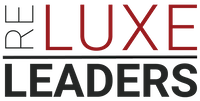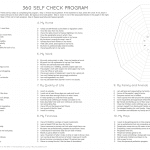6 Pillars of Money Mastery Every Brokerage Leader Must Know
By Chris Pollinger, Founder and CEO, as featured on Inman News
Money mastery remains fundamental to the enduring success and longevity of any brokerage or real estate business. Seasoned leaders across market sizes—from boutique brokerages to multi-market operators—face the same harsh reality: without disciplined financial management, high production and revenue quickly unravel.
Throughout my experience advising top brokers and elite firms, I’ve witnessed how a lack of control over finances can lead to catastrophic failures—even among those once ranked in the top ten nationally. Understanding and applying the six pillars of money mastery is critical for leaders seeking stability, sustainable scale, and legacy preservation.
1) Cash Flow
Across the spectrum—from businesses generating $250K to those exceeding $250M in GCI—poor cash flow management is a leading cause of failure. It’s not the size of the revenue, but the control over incoming and outgoing cash that dictates financial health.
Decisions made under cash flow stress invariably degrade business viability, making control over cash flow the first pillar of money mastery. Leaders must cultivate strong reserve funds to operate from a position of strength rather than desperation.
Practical Cash Flow Management Tips
- Pay bills on their scheduled due dates instead of prematurely to optimize liquidity.
- Disable auto-payments to retain control, scheduling payments manually each month.
- Eliminate expenditures that do not deliver positive returns on investment.
- Plan proactively for predictable income seasonality fluctuations.
- During financial stress, prioritize payments that impact credit and proactively negotiate terms with vendors to avoid service interruption.
2) Debt Management
The prevalent notion that “all debt is bad” runs counter to the strategic use of leverage necessary for scaling legacy businesses. Risk must be calibrated, not avoided.
Good debt—borrowed against appreciating assets or investments with strong returns—can expand capacity and accelerate growth. Conversely, debt on depreciating assets without at least a 10x ROI is generally ill-advised.
Strategic Use of Debt
- Avoid financing depreciating assets—like business computers, vehicles, or excessive wardrobe expenses—unless the ROI justifies significant leverage.
- Mortgage debt on primary residences typically makes sense as part of an overall wealth-building strategy.
- Investment property debt is justified when those assets generate positive cash flow.
- Investments in personal growth—education, coaching, high-level advisory—often yield positive returns and merit financing consideration.
3) Emergency Funds
The cyclical nature of the economy, with recessions approximately every 7–8 years, underscores the necessity of preparing for the unexpected. The unpredictability of global and market events further stresses this need.
As Og Mandino wisely said, “This too shall pass.” This principle applies equally to prosperous and challenging times, underscoring the criticality of a robust cash reserve.
Building Your Emergency Fund
- If you have no liquidity buffer, start by securing a credit line as a first safety net.
- Progressively accumulate cash reserves: aim for three months of expenses, then six, and ultimately a year.
- Maintain funds in liquid, accessible accounts with withdrawals possible within two weeks.
- While these funds can be invested, liquidity cannot be sacrificed for higher yield.
4) Proper Protection
Insurance and protection are essential yet should align with a foundation of cash flow control, debt management, and emergency reserves rather than precede them.
Initially, ensure your coverage meets essential needs without excessive premium burdens. As reserves grow, reevaluate insurance policies—with focus on raising limits and deductibles to optimize cost versus protection.
5) Build Wealth
Profits generated by your business should be leveraged towards expanding your asset base—whether by reinvesting in the business, acquiring real estate, or growing a diversified stock portfolio.
Effective wealth building relies on measured risk-taking and consistent, incremental returns rather than speculative bets or “home run” investments.
As your wealth accumulates, it unlocks access to higher-caliber investments that can compound returns more effectively.
6) Preserve Wealth
Once your business income approaches seven figures, a sophisticated tax strategist becomes indispensable. This role transcends traditional CPA bookkeeping by proactively designing tax-efficient strategies to protect and grow wealth.
Global and international diversification strategies should be incorporated to mitigate risk and capture broader opportunities aligned with legacy wealth management.
Successfully managing legacy-level wealth requires mastery across all six pillars—from cash flow to preservation—to secure peace of mind, time freedom, and enduring business success.





